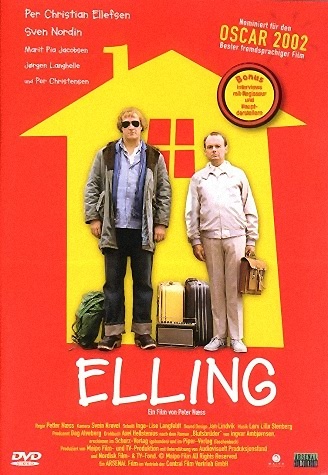[For the record: The word "murder" appears just once in the New York Times article, as part of a quoted statement. Here it is: "'Homicide is not synonymous with murder (a legal determination) and includes both criminal actions and excusable incidents (i.e., self-defense, law enforcement, combat),' according to an Army statement."]
Big doin's on The O'Reilly Factor. There's a "Factor Investigation" under way. This one is called "Murder Accusations Against U.S. Troops in Iraq & Afghanistan?"
You can tell it's bullshit because the title ends with a question mark. That question mark supposedly exonerates O'Reilly in perpetuity for the flagrantly deceptive practices to follow.
BILL O'REILLY, HOST: In the "Factor Investigation" segment tonight, you may remember that on March 16, "The New York Times" ran a front-page headline which said: "U.S. Military Says 26 Inmate Deaths May be Homicide."
Ah, the game's afoot. The headline uses the word "homicide"; the Factor Investigation uses the term "murder." Can you see where this is going? Bill and his guests are going to have some fun with the terms "murder" (highlighted in yellow) and "homicide" (highlighted in green).
Oh, and they also play some incredibly clumsy games with numbers (highlighted in blue), because O'Reilly is obsessed with the number "26" here. Like a dogged tax accountant, he's determined to get that figure below a certain cutoff point. He won't be able to do it, but O'Reilly will not be denied his "victory."
Now, “The Factor” came on that same night and said "The New York Times" report was misleading. One of our military analysts, Colonel David Hunt, put the number at four, not 26.Now this gets to be really funny in a perverse sort of way. O'Reilly thinks he's going to chip away at the number of possible homicides alleged in the NYT article, but by the end of the program he and his guests wind up increasing their estimated number of murders, and they don't do anything to discredit the "26" figure.
Subsequently, we asked the Army to clarify the situation. How many alleged murders are under investigation by military authorities? A simple question. But the answer has been very, very difficult to obtain."Approximately 30." Gee, that's awfully close to the Times's 26.
Joining us now from Boston is Colonel David Hunt. . . . [and] Jed Babbin, former deputy Undersecretary of Defense during Bush the elder's administration. . . .
Mr. Babbin, I — after almost three weeks of investigation — still do not know how many potential homicides there are within military ranks in Afghanistan and Iraq. Do you, sir?
JED BABBIN: Well, I think I know, Bill. I spent quite a number of hours today trying to dig into it. The long and the short of it is there were something like 87 deaths. Of them approximately 30 are being classified as possible homicides.
The problem that you and I are having is that the Army and the Navy are using the term "homicide" to not just cover murder but to cover justifiable homicide, self-defense, and a whole variety of other things.And just when I think Babbin may be the voice of reason here, perhaps even explaining the differences between homicide and murder, he goes off, way off, on a rant against the newspaper. You'd think O'Reilly would really get into this, but he's obsessed with "26."
O'REILLY: All right. So "The New York Times" contends that 26 murders took place, and they couch it by using the word "may." We've got to be fair here. They said may.Watch out whenever O'Reilly says something like "We've got to be fair here." He's conceding a point he doesn't really care about in order to hold on to his falsehood of choice.
O'REILLY: From what you have seen, your research, how many outright murders do you believe?Hmm. Hunt's 25 is awfully close to the Times's 26. Where's the controversy?
BABBIN: I believe there may have been as many as half a dozen or a dozen.
O'REILLY: All right.
BABBIN: And those are being prosecuted right now. We have something...
O'REILLY: Between six and 12...
BABBIN: Roughly.
O'REILLY: Because Colonel Hunt put the number at four.
Now Colonel, do you want to weigh in on this? Are you standing by your number four? Or what do you — what do you say?
COL. DAVID HUNT, FOX NEWS MILITARY ANALYST: Yes, sure. Here's what I think the story is. There were 70,000 detainees between Afghanistan and Iraq the last three years. A hundred and eight or so have been — detainees have died in captivity, for either being (UNINTELLIGIBLE) at Abu Ghraib, died of natural causes.
There have been 500 charges of somebody doing something bad to a detainee in three or four years. Of that 500 or 108, you've got less than a quarter, 25, who are continuing to be investigated.
HUNT: The four I gave you two weeks ago was still a good number. That was talking about people that had been charged for murder. Now the number may be between four and nine.Oops. Hunt just upped his original four to nine, although he seems to be talking about the number of people charged, not the number dead -- but, hey, O'Reilly doesn't care. And wait, Hunt's not done revising his figures yet.
O'REILLY: Right.It's official: The Factor Investigation has now gotten buried under its own bullshit. But O'Reilly being O'Reilly is going to declare victory and break for commercials no matter what.
HUNT: So the problem is, the story, I think, is 70,000 going down to less, some number between four and 12.
O'REILLY: All right. So what we've narrowed it down to on this broadcast is between six and 12 murders —murders. Like you go and get the death penalty, or you get life in prison. That's what we have. That's half of what "The New York Times" implied, which anybody reading that article, unless you were an expert, would have said, "Jeez, 26 murders."Brilliant! O'Reilly pretends that he's pretty much halved the 26 possible homicides discussed in the Times article by deducting his guests' estimates of four to 12 murders. Strange bookkeeping, but it works in the no-spin zone.
That'll show those slick Times reporters, who are only trying to trick people anyway by using "homicide" when they know everybody's going to think "murder" even though the article contains an Army statement describing the difference. . . .
Jeez, only on "The O'Reilly Factor."



No comments:
Post a Comment